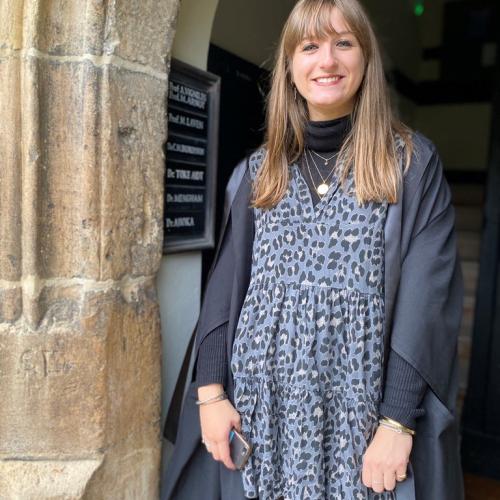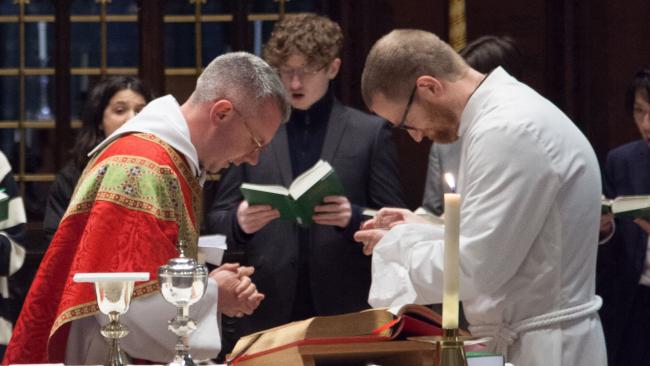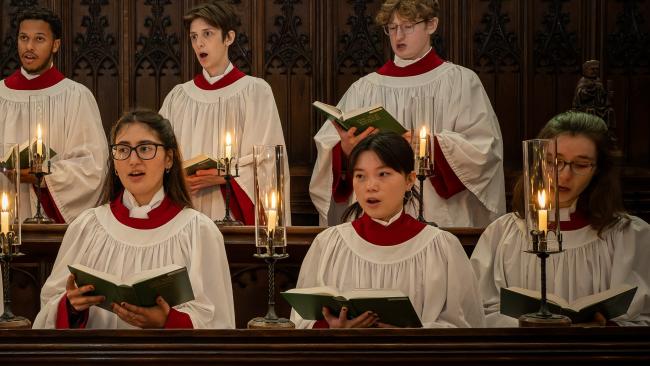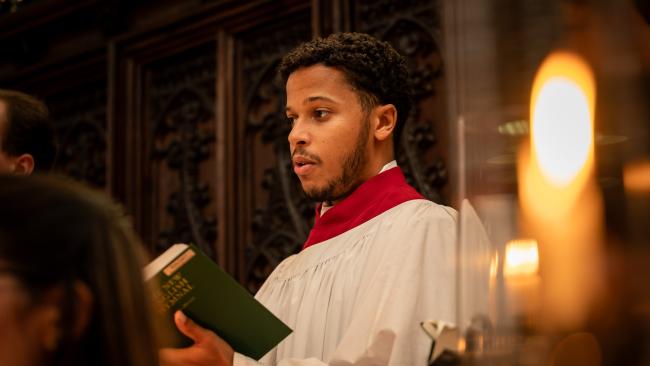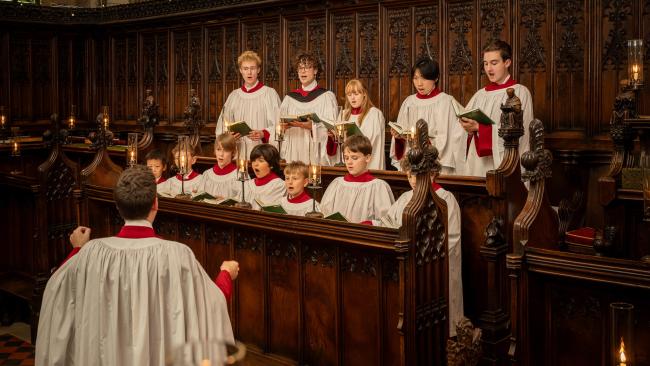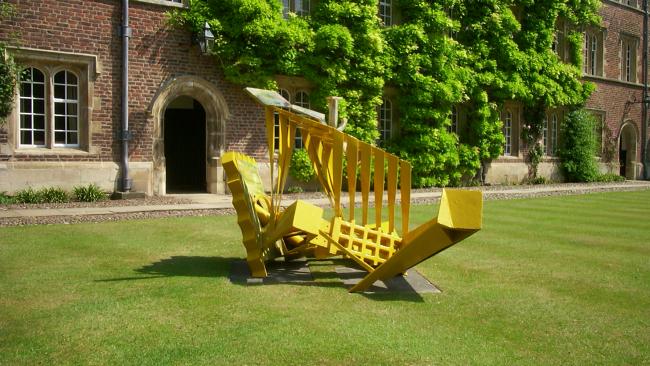
Phillip King
Works exhibited: Brake, Academy Piece, Open (red-blue) Bound, Spring-a-ling, Fire in Taurus.
Ever since his work first came to general notice in the New Generation exhibition at the Whitechapel in 1963, Phillip King has been a defining presence in British sculpture. His career has been marked by an unusual versatility in the range of materials he has chosen to work with: steel, bronze, wood, fibreglass, slate, clay, wax, plastics, and Oasis.
The stimulus of new materials, which King’s audience has learned to expect, has been part and parcel of the odyssey of forms that has also characterised his development over the last 40 years. The artist himself understands the one as the direct consequence of the other: "new materials can often lead to new ways of thinking".
What is particularly exciting about the selection of King’s works on display in Jesus College is the way each exhibit represents a different stage in the evolution of his ideas, a different solution to the problem of sculptural form.
The earliest work to be included is Brake (1966), a boldly minimalist construction that reflects a keen interest in ‘primary structures’. With an extreme economy of means, King lays bare the most basic of artistic choices involved in joining and separating materials, reducing the creative process to a restricted number of fundamental decisions, which he performs with absolute finality. The choice of angles and intervals is critical; the act of judgement inescapable.
There is a similar insistence on compositional discipline in the gigantic Academy Piece of 1972, except that here, the repercussions of formal choice are magnified in repetition. The point about enlargement is the resonance it gives to the original specifications. Academy Piece is not a demonstration of size, but a celebration of proportions, the beauty of which is confirmed, not dissipated, by aggregation.
Only a year separates the monumental introversion of this work from Open (red-blue) Bound, with its complete lack of repose. This sculpture, with its interrupted surface of plates and grilles, organises the space around it to draw the viewer in to a central collecting point. All the energy absorbed frontally is then pushed upwards. Open (red-blue) Bound is all about mobilising the audience. As its title suggests, it is structurally more ambivalent than King’s earlier work: jointed but loose limbed; conceptually, like a book in opening up to a world elsewhere while being physically held back in the unity of a single binding. It combines both solid and latticed surfaces, alternately reflecting and channelling the viewer’s attention.
There is a similar kineticism in Spring-a-ling (1983), a work which seems to be about to test the relationship between sculpture and gravity. A series of layered elements appears to be tightly compacted. The pent up force which the sculpture holds in reserve is focused on the vertical axis, although the true nature of the energy it might release is suggested by the way it ricochets around a spectrum of greens, blues and reds. The deliberately overreaching panache of this segmented work contrasts strongly with the prudential character of the early compositions.
Fire in Taurus (1984) appears to consolidate the achievements of both styles, its heraldic assurance produced by a distillation of myth, the idea of a celestial sign that has taken root in the earth.

